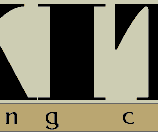 Save this page (94.6 kb)
Save this page (94.6 kb)
OMIYA, KOMAO, "STORY OF PEDIGREE, THE AKITA DOG"
("THE AMERICAN AKITA DOG"), WAN NO. 123, JANUARY 1994, pp. 59-62, PET LIFE-SHA, TOKYO 171, JAPAN.
STORY OF PEDIGREE, THE AKITA DOG
By Komao Omiya
A Dog Whose Fighting Dog History Has Been Deleted
"The Akita dog has much spirit. In Japan, they are warmly regarded as an owner's faithful companion, pet, guard dog and a symbol of well-being of the family. At the birth of a child, an Akita dog statuette is presented as a gift with wishes for health good fortune and longevity for that household. Such statuette is also given to the sick with wishes for an early recovery by the visitor.
The Akita dog is affectionate and friendly to his household and their friends. From ancient times, mothers in Japan used Akita dog to guard their children. Generally these dogs have a reserved behavior. However, when sensing dangerous human beings or animals the dog’s defensive instincts turns to boldness to protect his owner's household. (Omission)
From ancient times, the Japanese term, matagi, referred to village men who were the best hunters. Northern Akita has steep mountainous regions covered by snow during the winter. In such regions, the Akita dog was called the Matagi dog or outstanding dog that were used to hunt bears, deer and boars. (Omission)
The Akita dog’s strength, keen eyes, keen scent, perseverance silence and speed, all added to their adaptability to hunt in deep snow. Also, they are at their best, when they are able to gently retrieve in its mouth a waterfowl brought down by the hunter's arrow. It has also been said that the Akita dog drives fishes into the spread out fisherman’s net."
The foregoing quotations are from the section on the history of the development of the Akita dog from the book. The Complete Book of Dogs published by the American Kennel Club (AKC) - The Japanese Edition of this book is now in busy preparation to be published in November 1994 (Publishing Company is Deieichishii?).
Since I was asked to participate in this preparation, I was able to obtain permission to use some quotations from the manuscript.
First of all, the Akita dog is a national dog of Japan. I believe that no one will object to that statement. However, many are not aware that the type of Akita dog of today was formed about sixty to seventy years ago. Furthermore, not much is known about the background and characters of the owners of these dogs
The AKC's The Complete Book of Dogs has erred in omitting the true purpose of protecting the Akita dog. This book mentions the Matagi dog was an excellent hunting dog. But the book fails to mention that the Matagi dog changed to become the Akita dog that was raised as fighting dogs for about 300 years. I believe this was omitted deliberately.
The JKC ( Japan Kennel Club ) dog standards were obtained from central committees impartial to each dog breed with no conspicuous inclinations toward a given dog breed. However, in the case of the AKC, dog standards are compiled by dog associations of a given dog breed. Therefore, this could lead to partiality that could become quite evident at times, and can result in the loss of important true image of the dog in some instances.
In the case of the Akita dog, its history as a fighting dog has been concealed. Among numerous Japanese dogs with standing ears and curled tail, only the Akita dog is now of the large type. If this portion of history is ignored, it would be difficult to explain why five of the other Japanese dogs are of the medium and small types. The medium and small types of Japanese dogs were hunting dogs. The Akita matagi dog was also a hunting dog and of
the medium type of that time. The Akita matagi dog began to change toward the large type when the fighting dog began to be favored. A larger dog can overpower its opponent and its chances of being pinned down by the opponent becomes less likely.
It is difficult for me to understand why Akita dog breeders in the United States attempt to conceal the fighting dog history of the past and, in place of it, desire to add claims (which cannot be completely refuted) such as the ability to retrieve downed waterfowls as done by retrievers, or drive fishes into fishing nets as done by dogs such as the Newfoundland dogs.
One should not be ashamed of the Akita dog's fighting dog history. The Mastiffs, Bulldogs, Bulls and Terriers of mixed blood all have fighting dog histories. All dogs with large bodies and large heads were probably once fighting dogs of the past.
Until about 100 to 150 years ago, fighting dogs were well received by the royalty and masses throughout the world. However, later, due to changes in preferences toward diverse recreation and to clamors for animal preservation, dogfighting turned into minor events.
Dog magazines in the mid 1930s allotted to ten page reports with photographs of well attended fighting dog matches in every issue^ As expected, during that period, the Akita dog, as a fighting dog, was eclipsed by the Tosa fighting dog, which was in the limelight. It was a different world then.
The 1868 Imperial Restoration And the Defeat in World War Two Led To Crossbreedings For The Second Time
Referring to the Akita dog, the sole large type of Japanese dog, Keitaro Kondo , the writer, who filled in as a Nippo judge during his university student days, had this to say in his novel Inu Danna (Dog Master) : "The Akita dog, as a Japanese dog, is not a pure breed. Since the Meiji Imperial Restoration of 1868, due to the sudden deluge of western dogs, the Akita dog became an impure breed. Since the Akita dog was raised mostly in cities as guard dogs, crossbreedings with western dogs were common. On the other hand, since the medium type Japanese dogs such as the Kishu, Shikoku an Hokkaido dogs and the Shiba dog of the small type were raised as hunting dogs mostly in deep mountainous areas, western dogs were unable to make any great inroads into these areas, and the purity of these Japanese dogs were usually maintained.
When the proposal to preserve the pure dog breed was contemplated, impure changes of the Akita dog were discovered. Ultimately, by selecting dogs of high purity and careful weeding out of undesirables from the impure Akita dogs, the Akita dog has been restored (or reconstructed) to the type of Akita dog of today.
At times, bloodlines of the Akita matagi dog were introduced. The matagi dogs were pure medium type Japanese dogs that were used as bear hunting dogs by hunters who lived in the deep mountainous areas of Akita and Iwate. By selecting the larger male dogs from these dogs and purchasing them from hunters, these dogs were bred to Akita dog females in order to raise the purity of the bloodline. In some cases, bloodlines of the Karafuto dogs were introduced."
Kentaro Kondo has not touched at all on the relationship of the Akita dog with the fighting dog. It was Yukio Togawa , the writer, who has mentioned that the increase in size of the Akita dog was related to their use as a fighting dog. He quotes the opinion of the Japanese dog authority, Kokichi Saito ( pen name : Hiroshi, has also been translated as Hirokichi, Hiroyoshi ), introduced here:
"The Akita dog. This is a dog that was produced from the above-mentioned Matagi dog as the foundation dog, and was bred toward a larger powerful fighting dog. Hence, dogs of the longhaired Karafuto dog line, the short haired Tosa fighting dog line and the Mastiff line were also mixed into this breed.
The Japanese dog restoration movement made much headway before the war. However, this was suspended temporarily due to the war. After the war, these dogs were received by officers and men of the occupation forces and produced in large quantities, but unfortunately, many of these were crossbred with bloodlines of the Shepherd and the Great Dane. (Yukio Togawa, Aiken Horoki (Pet Dog Topics . Published by Toto-shobo.)"
Kentaro Kondo has expressed his disappointment in that the purity of the Akita dog was greatly affected by the great importation during the period of culture and enlightenment. Yukio Togawa has introduced the opinion of Saito on the adulteration of the Akita dog by bloodlines of the German Shepherd and Great Dane during the Akita dog boom that occurred immediately after World War Two. As a result, several different types of Akita dogs began to emerge. This was especially noticeable during the mid to late 1940s.
First of all, Kongo-go of the Dewa line made its appearance in Tokyo and dominated the scene for a while. This was an Akita dog of the portly type with blackish coat, which became very popular, so that Akita dogs in Japan became portly and blackish type. During this time, American servicemen with the occupation forced returning from Japan had Akita dogs of this type.
However, during the mid 1950s, based on the statement that the Akita dogs up to that time did not have the image of the Akita Magagi dog, these dogs began to be rejected. This was replaced by the more muscular and noticeable pinto of the Ichinoseki line of Akita dogs, which began to be favored. Again the clear single colored coat [The urajiro (the nearly white coat seen under the lower Jaw to the lower part of the body to the lower surface of the tail seen in Japanese dogs) is not included in this situation] began to be favored.
Akita dogs of today are mostly of the muscular type with the clear coat color. However, Akita dogs in the United States are mostly of the portly type with the blackish coat which differ greatly. They appear to be of a different dog breed.
How did this occur? When Akita dogs in Japan changed from the Dewa line to the Ichinoseki line , Akita dog fans in Japan were not aware that dogs of the Dewa line in the United States were being produced in large numbers. They also had not communicated with Akita dog fans in the United States. Even if communication had been established, it was probably too late. To most Americans (including Europeans), the Akita dog is the portly type with the blackish coat. The Japanese did not sell fake Akita dogs to Americans, but ultimately, to Americans, it seemed to be so.
Thus the commentaries in the AKC Akita dog standard make no mention of the "fighting dog" that was preserved for hundreds of years. This omission could not be blamed entirely on the Americans. To them. the Akita dog was not a fighting dog in the past and they strongly believe in the large nearly black pinto Akita dog with the unclear coat color.
After several decades, would this become a separate dog breed?
(Words in italics and names of people and dogs in bold types were provided by the translator.)
Translated by Tatsuo Kimura for personal study and review.
11/21/1997









